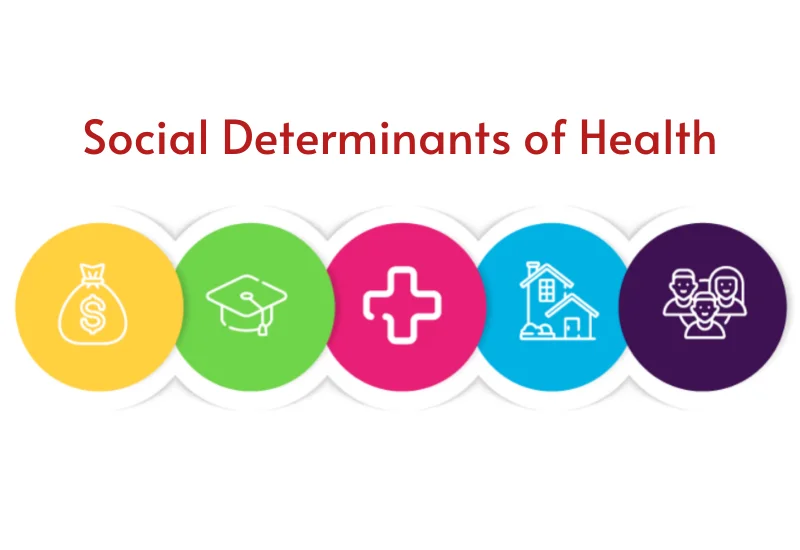Social determinants of health (SDOH) are defined as circumstances apart from medical conditions that affect an individual’s life. These include the living conditions, employment status, education, and multiple other factors that influence health on an individual and community scale.
Establishing social determinants of health ensures that everyone has an equal opportunity to seek health care despite any present discriminating factors. Social, economic, and political factors have created discrepancies in delivering equal healthcare services among the general population. Many diseases occur in poorer states, but they lack necessary healthcare services. So certain measures need to be taken to improve the delivery of medical services across all states. These are outlined in the Healthy People 2030 program.
According to the Center for Disease Control and Prevention (CDC), social determinants of health are divided into five main categories: economic stability, education access and quality, healthcare access and quality, neighborhood and built environment, and social community and context.
Economic Stability
According to a research study, approximately 1 out of every 10 individuals in the United States live in poverty or survive on a below-average income. This limits their access to healthcare services as most basic medical checkups or exams cost a lot. It is also difficult to maintain a healthy diet and suitable living environment in such a case.
The objective is to improve employment opportunities and provide stable sources of income to a maximum number of people. It should also include people with chronic medical conditions or disabilities. Healthy People 2030 focuses on introducing better career counseling programs and employment opportunities so more people can afford quality healthcare.
Education Access and Quality
The level of education can influence a person’s health in numerous ways. Educated adults are more aware of general health problems and can find effective treatment measures. Besides, education also increases the chance at better employment opportunities. Children and adolescents with better education can also manage well under stress.
Future endeavors focus on providing equal education opportunities to all children and adolescents. Many children go through school but cannot afford higher education; therefore, measures need to be taken to provide quality education at a lesser cost. Better education helps proper brain development and reduces certain health risks that may otherwise cause future complications.
Healthcare Access and Quality
Many people in the United States do not have health insurance and access to quality healthcare services. Certain people often go undiagnosed for long periods until their disease worsens due to lack of access to primary healthcare services and screening tests. An example of this is breast cancer among women, which often goes undiagnosed because many have no access to annual mammography tests.
Heathy People 2030 includes measures to improve the availability of healthcare services among the general population. Easy availability of screening tests can help in the early diagnosis of cancer and other diseases. Direct or online contact with a healthcare provider can help prevent and treat various medical conditions.
Neighborhood and Built Environment
Living situations and neighborhoods can significantly influence a person’s health. Certain regions in the United States have air and water pollution, increased crime rates, and unsafe neighborhoods. Racial or ethnic differences between communities also influence the living environment's safety.
Future objectives are focused on improving overall living conditions and assuring safe environments for people from all communities. These changes need to be made on political, federal, and social levels. Additionally, measures to reduce environmental pollution such as walking and bikes instead of cars can also help in improving health conditions.
Social and Community Context
Social communications between family, friends, coworkers, neighbors, etc., can also affect general health. Factors like racial or ethnic discrimination, bullying, or low socioeconomic status can negatively impact a person’s mental and physical health.
Healthy People 2030 includes objectives to promote healthy community relationships and safety measures. This includes people of all ages and ethnicities, from children to grown adults. Social support and acceptance can positively affect a person and improve their overall efficiency at school, work, or personal life.
By following the individual objectives outlined under the social determinants of health, healthcare quality can be improved, and the incidence of health-related issues can be reduced to a certain extent.
Visit cura4u for further details on medical conditions, diagnostic tests, and online consultation. Register yourself and your loved ones today for optimum healthcare services!












